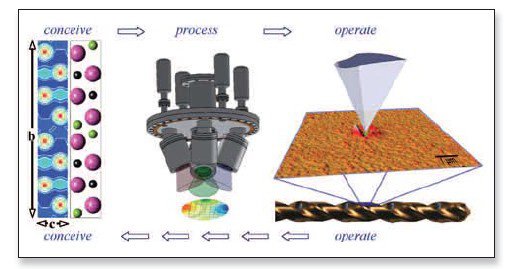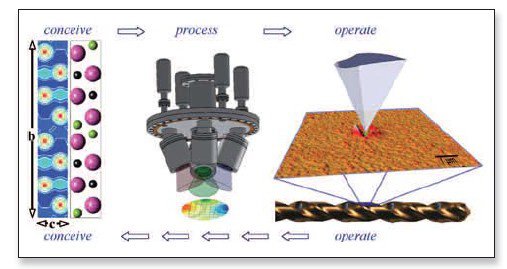Self-Reporting Materials
Self reporting materials “communicate” damage of the material via changes of properties that can be measured in service as a consequence of chemical changes on the atomic length scale and/or phase transformations. Harnessing this would provide invaluable functionality for damage assessment and control and would constitute a major leap forward as the “health” of any material component exposed to mechanical loads could be monitored in service.
The research in the Fellow group is focused on the design of materials with self reporting ability. To this end we will synthesize and characterize charge density modulated materials (multilayers & nanolaminates) regarding their elastic and plastic properties (objective 1) as well as their thermal and chemical stability (objective 2). Based on these investigations and guidance from quantum mechanical calculations the charge density modulated materials with self reporting capabilities will be designed by substitution and/or addition of elements (objective 3). Based on previous theoretical and experimental work two fascinating nanolaminated compounds are selected for exploration: While Cr2AlC exhibits outstanding chemical stability Mo2BC is predicted to be exceptionally stiff and at the same time moderately ductile.
The materials design concept for self reporting and self healing materials is based on 12 years acquired design experience by the Schneider group at RWTH Aachen. Knowledge gained in an iterative fashion (see Fig. 1) during operation and characterization will modify the quantum mechanical materials description in the conception. Thus, a more refined description of the material is obtained with every iteration. Fig. 1 graphically illustrates the materials design approach developed and implemented in the Schneider group at RWTH Aachen University.

(Left) Unit cell and charge density plot of Mo2BC showingcovalent (high electron density) and metallic (low electron density) bonding contributions. (Middle) Schematics of combinatorial magnetron sputtering with image showing chemical composition gradient. (Right) Topographical image of a residual indent in Mo2BC. Significant pile-up (20-50nm in height) around the indent and no visible cracks, suggesting moderate ductility.
Future technology challenges will no longer be simply addressed by today’s material and processing solutions, which are often based on trial and error. Instead guidance will be attained from correlative experimental and theoretical research bridging all length scales. For example, it is evident that future cutting and forming operations will utilize tool surfaces that are self reporting in the sense that the integrity of the component is monitored and communicated. Self healing materials constitute a paradigm shift in modern materials science [3]. Damaged components will no longer be replaced by new ones, but are autonomously healed ideally while in service. Finally, the connection of self healing and self reporting characteristics constitutes an extremely attractive perspective both in terms of fundamental materials science with a tremendous academic impact and from an application point of view. Self healing and self reporting materials rely on atomic scale mechanisms: Propitious materials design efforts in this direction have to include correlative atomic scale theoretical and experimental efforts
The Max Planck Fellow Programme promotes the cooperation of outstanding university professors and researchers of the Max Planck Society. The appointment of university professors as Max Planck Fellows is limited to a five-year period and entails the supervision of a small working group at a Max Planck institute.
Advanced functional materials 30 (2020) 2000146
